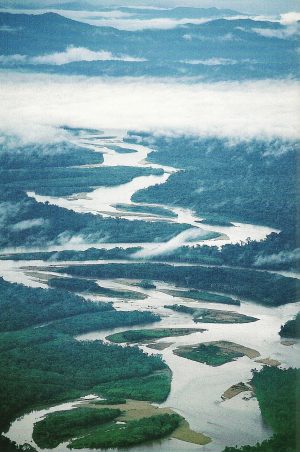
Fishing rods of collection
Fishing rods of collection

The period we are interested in here (1920-1980) has seen three real revolutions in the manufacture of fishing rods, whether it be for spinning, fly fishing or coarse fishing.
In the immediate post-war period, the fishing rods for with the blow or the plug continued to be manufactured out of bamboo or reed sometimes called “Japanese rice”. For more than a century, these materials had been imported from China, Indochina or Japan and were then straightened, worked and assembled, either in large factories such as Pezon & Michel in Amboise, or in countless small artisan workshops, all over our provinces and large cities. Some manufacturers had arrived in the assembly, the “tierçage”, the virolage and the interlocking of these canes, to perfection.
In the early sixties, the advent of hollow fiberglass (a French invention) revolutionized the manufacture of rods, making them rot-proof, lighter, telescopic and relatively cheap. This material, originally intended for the manufacture of sheaths for electric wires, allowed for fishing rods with a higher gear with lengths of 8 to 9 m, a decisive advantage in canals, lakes and large rivers.
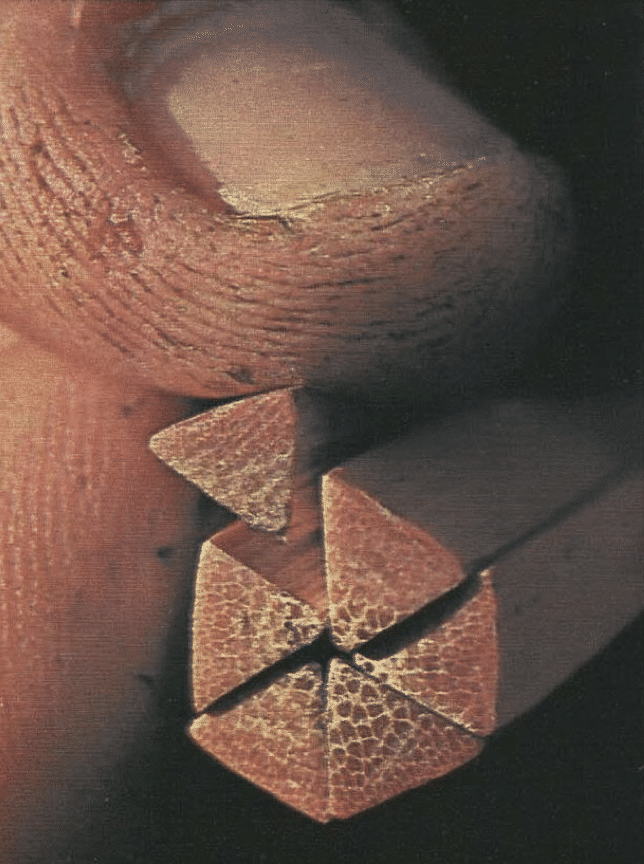
The six strands of bamboo split into a "triangle" ready to be assembled.
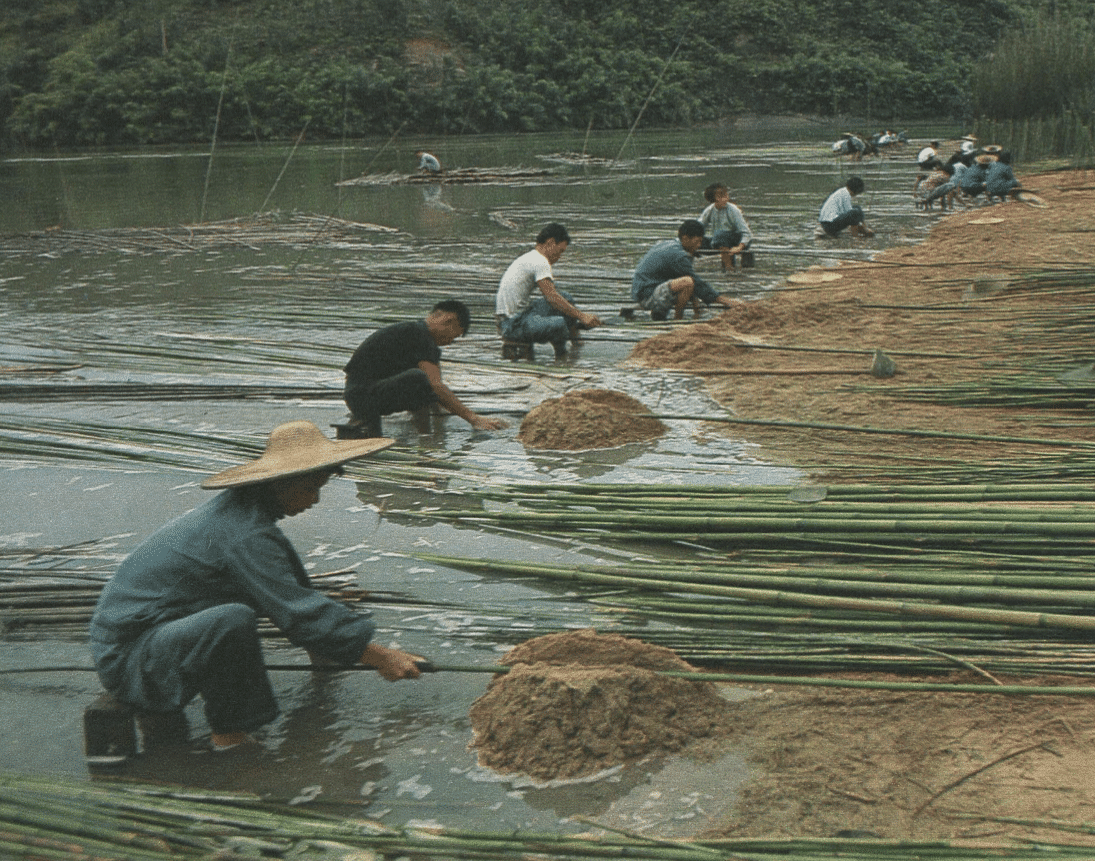
For the manufacture of fishing rods, the best bamboo comes from China and especially from the Palakona mountains, where at altitude the growth is much slower than at sea level. After Mao Tse Toung came to power in 1949 and the economic sanctions against communist China, bamboo did not reach western countries for a quarter of a century.
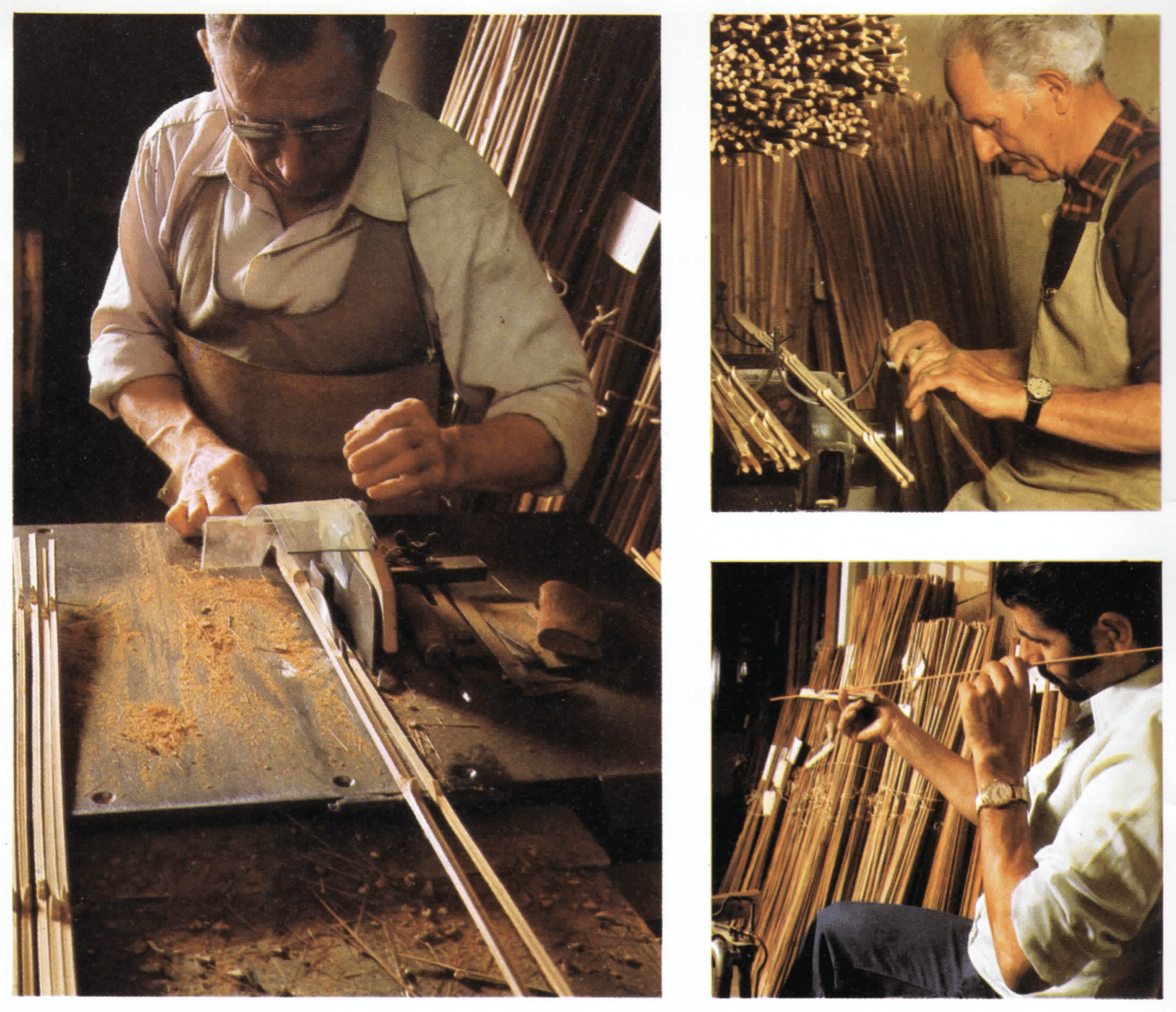
For fly rods or casting rods, since the beginning of the thirties, all the good models were built, that’s the exact term, in split bamboo. The firm Pezon & Michel d’Amboise, founded in 1860, was then in full expansion and started to compete seriously with the famous English firm Hardy Brothers. From 1936 onwards, with the exclusive collaboration of Charles Ritz, Pezon & Michel produced the best fly rods (Parabolic series) and spinning rods (Telebolic series) in the world until the beginning of the 1960s. The split bamboo had no equal for the manufacture of sport fishing rods. In close collaboration with Pierre Creusevaut, the world champion caster of the time, Charles Ritz found in Pezon et Michel, a factory to match his creative imagination. For nearly forty years, his collaboration with Pezon & Michel, will make the Amboise firm, the first exporter of fishing equipment. In 1960, more than 50% of the production of Télébolic casting rods and Luxor reels was bought by the American market.

From the raw bamboo to the tied tip of a fly rod, the different stages of construction of a split bamboo rod are very well represented on this demonstration panel from Pezon et Michel.
As for the manufacture of fishing rods, the appearance of hollow fiberglass, in the early sixties, was a real revolution in casting and fly fishing, which will really democratize the practice of these fisheries. At that time, a split fly rod cost twice the average monthly salary of a skilled worker, fiberglass allowed to divide this price by ten.
And then fifteen years later, in 1976 to be precise, appeared the carbon fiber or graphite, which signed the death warrant of the industrial manufacture of split bamboo fishing rods. Where in France, England or the United States, it took a highly skilled worker or craftsman more than a hundred hours of high precision manual work to make a fly or spinning rod, fully automated industrial production benches in Korea, China or Singapore made it possible to produce mass-produced models in less than two hours, with equivalent casting qualities and for a cost price a hundred times lower. Carbon fiber for fly rods, like composite fibers for the manufacture of skis, allowed everyone to learn much more easily to cast and to enjoy themselves, in a few tens of hours of learning where it used to take two to three years of training to master the casting gesture to perfection.
At the beginning of the 21st century, split bamboo is back in fashion.
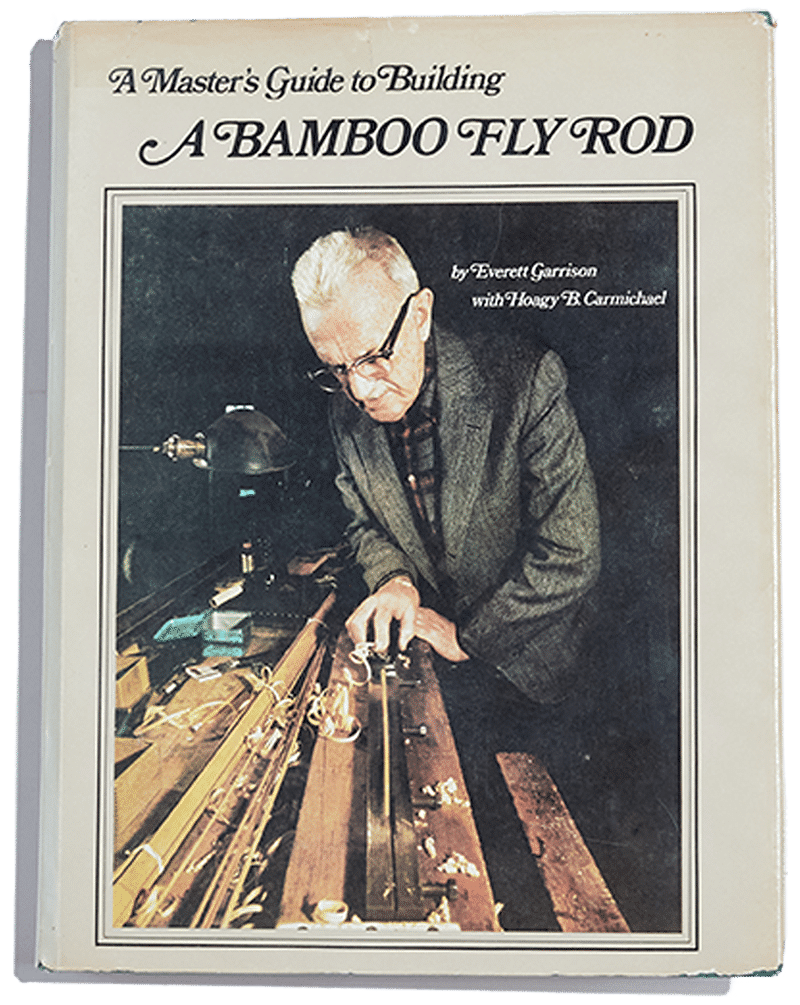
Garrison was one of the top split bamboo fly rod makers in the United States in the 1950s and 1960s. At auctions, his rods routinely fetch record prices of over $5000.00.
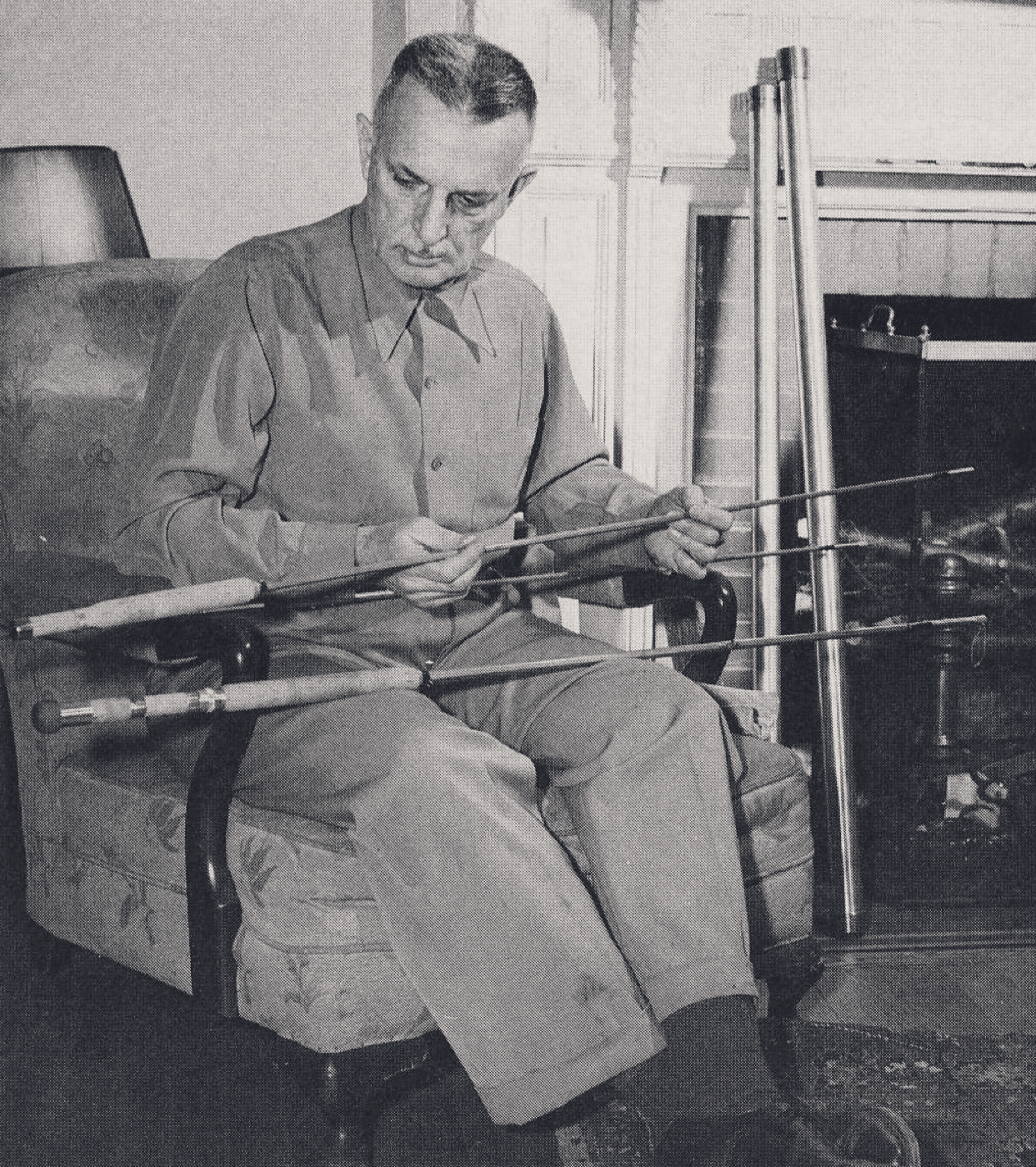
Garrison carefully examines the finish on two fly rods, one trout and one salmon.
At the beginning of the 21st century, as for the beautiful old cars, the violins of collection or the beautiful books, the split bamboo for the purists and the true connoisseurs of the fly fishing, comes back in fashion, especially in the United States, in Japan, but also in Great Britain and since recently in France.
A few “top of the range” American companies such as Winston, Thomas and Thomas, Orvis and above all many craftsmen or rod makers, are reviving a highly appreciated production, some models of which must be ordered several years in advance, just as for an exceptional gun from Purdey, Boss or Holland. The prices of these fishing rods from craftsmen or prestigious houses such as Winston, are affected, but the pleasure of fishing with such sublime objects which are no more fragile than a carbon rod, has no comparison
Today, just as the best American skiers are returning to the spindle pants and wooden skis of the 1930’s (see Hemingway in Austria), the greatest American fishermen no longer fish in fresh water, for trout or salmon, except with split bamboo. And when we see in France, but also in England (a little less in the United States) the price of a carbon fiber rod of renowned brands such as Sage, Scott, Thomas or Winston which is close to 800 or even 1000 euros, we can wonder when we know that manufactured in very large series in Singapore or Seoul, their starting price must be the tenth or even the twentieth of their retail price in Europe, if the “up to date 2.0” fishermen have not gone crazy…
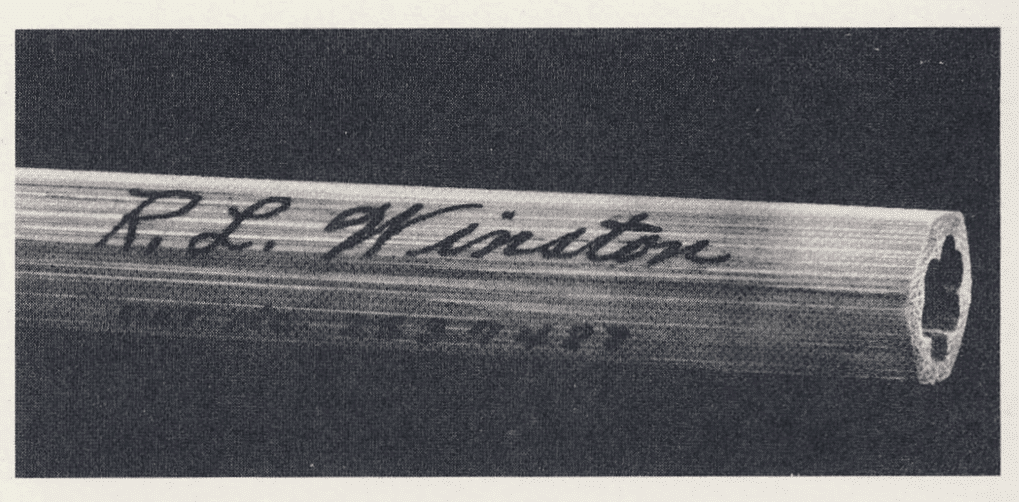
To lighten the weight of its fly rods, the Winston company had the idea of honeycombing the bamboo.
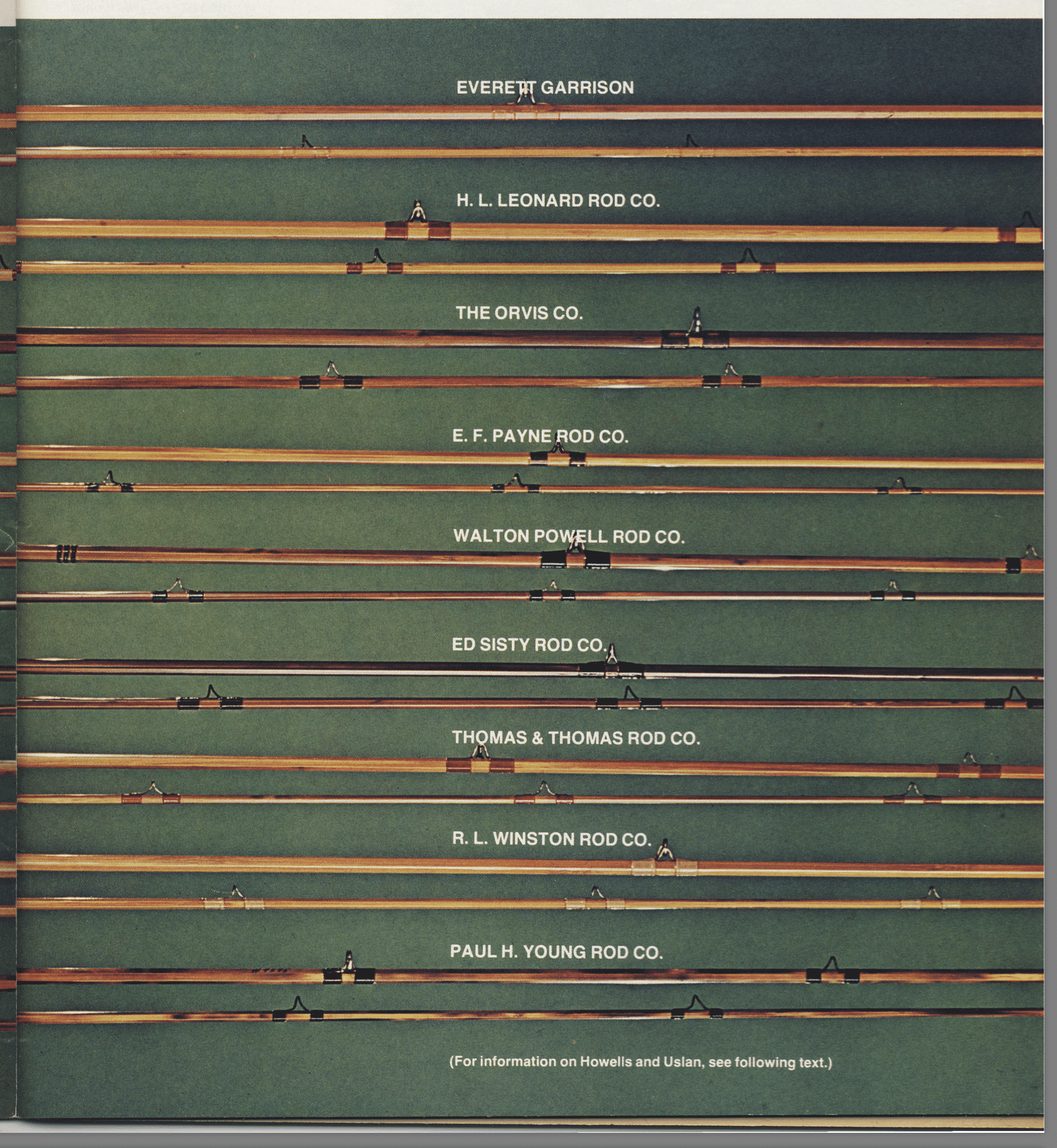
Some of the greatest fly rod craftsmen (artists) in the world, all American...Unlike Garrison, Payne, and Young who only made a few dozen rods a year, Orvis, Winston, and Leonard mass-produced.
Second hand and in perfect condition, a branded split rod costs less than a carbon rod.
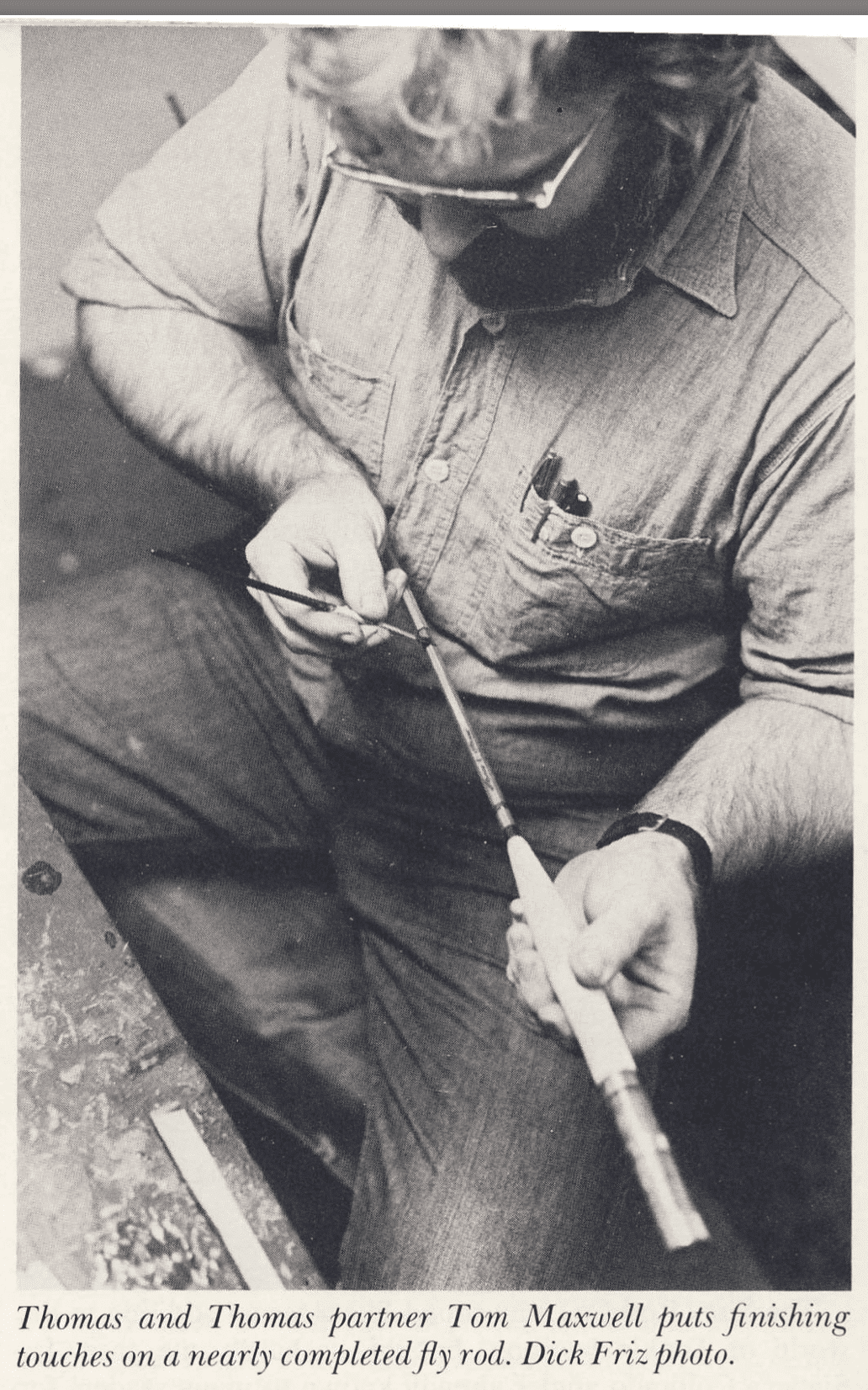
The cane is almost finished, it only remains to varnish it with several layers.
And if you want to try the split rod, but without having to wait more than a year for delivery, nor without having to pay a price, however reasonable here of 1000 or 1500 euros, at a qualified craftsman, know that you can find in France where Pezon & Michel manufactured between 1935 and 1980 thousands of fly rods in bamboo, The Parabolic and PPP series are among the best in the world, models in very good condition, even practically new for some rods, for a few hundred euros, let’s say from 300 for a Parabolic special to 600/800 for a PPP like new and with two tips.
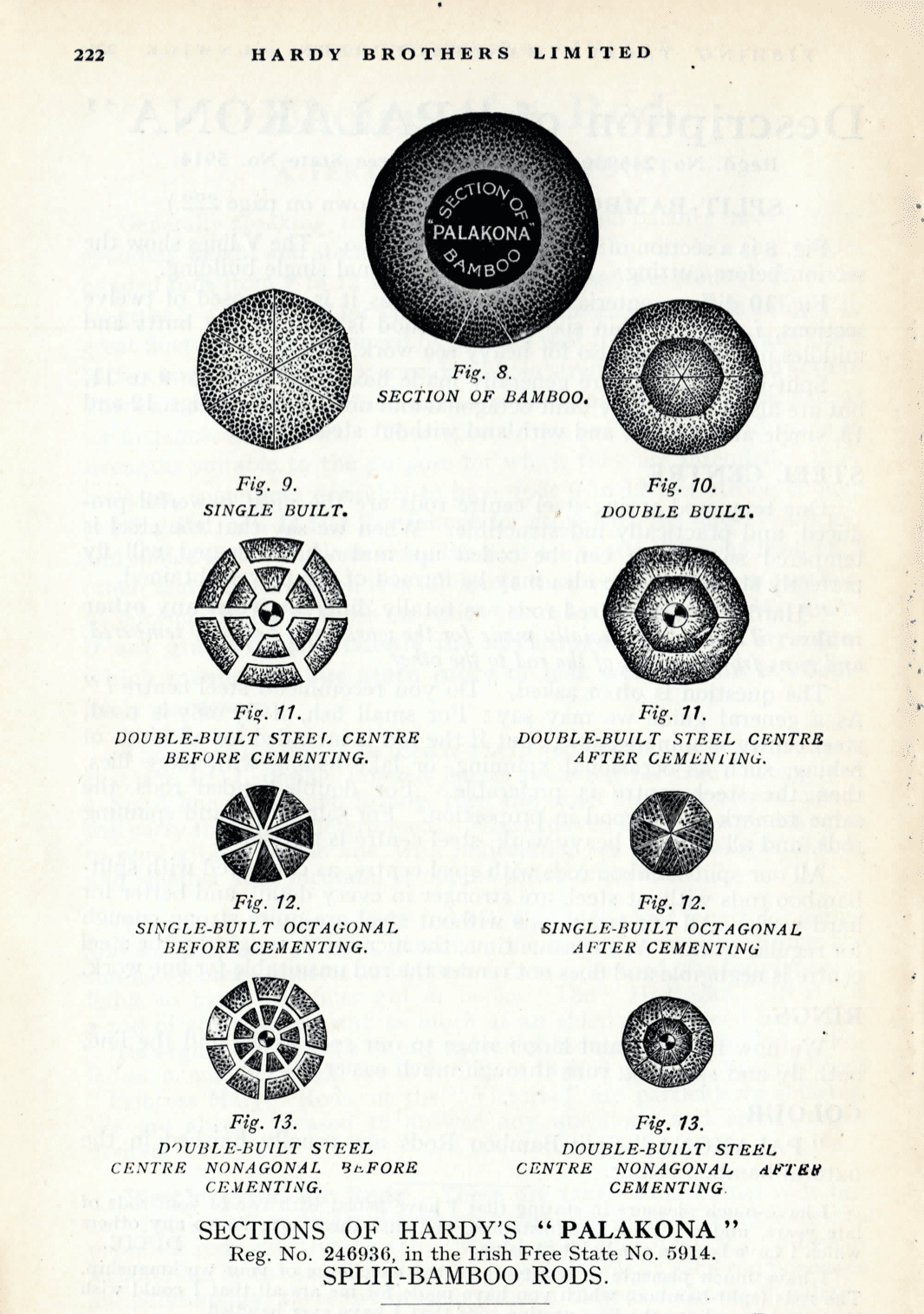
This page from a Hardy catalog shows the section of rods, single or double construction, with steel or octagonal center.
On the English side there is a plethora of trout and salmon rods from Hardy, Farlow, Sharpe and other good brands, called second hand, but which again are in perfect condition, or even like new… As the pound sterling is much more affordable today than thirty years ago, a C.C.de France (Casting Club de France), a Gold Medal or a Hololight from Hardy will cost you a lot less than the equivalent model in carbon from Sage, Scott or Winston. Well balanced with a plastic or natural line, you will cast almost as far, but above all you will land far more trout, grayling or salmon than with carbon which “electrifies” the fishes’ mouths. Last but not least, you won’t be afraid to fish when the storm approaches and the trout rise under the lightnings.
With the Parabolic canes, Charles Ritz was a genius inventor.
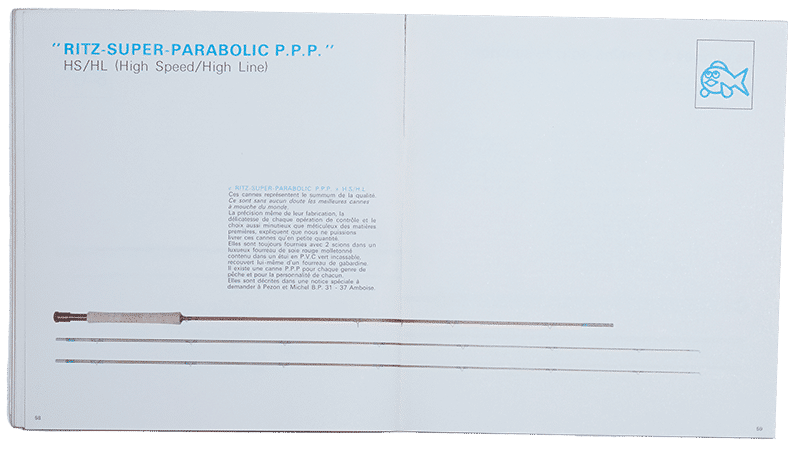
The Ritz-Super-Parabolic P.P.P. rods (about thirty models) remain unequalled, even today, in the field of mass-produced rods. With an impeccable action and finish, they are highly sought after by anglers and collectors alike.
Ernest Hemingway, who in August 1944 boasted that he had liberated the bar at the Ritz, wrote the preface for the American edition of his friend Charles’ book “A Fly Fisher’s Life”. In today’s world very few people will have the opportunity to fish as much as Mr. Charles. Even if there were, none will ever fish as well.
Charles Ritz discovered fly fishing when his father, Caesar Ritz, who had opened the Hotel de la Place Vendôme in 1898, sent him in 1916 to learn the ropes at the Ritz Carlton in New York. In the basement of the hotel, the young Charles had set up a room where he tinkered with the fly rods he bought from New York second-hand dealers “to the great despair of the hotel manager who put up with my audacity because I was Dad’s son“. An excellent caster, he accompanied the Ritz Carlton’s fishing guests on the best rivers of the Catskills, an hour’s drive from Manhattan. There he met Fred Payne, who is to the split bamboo fly rod what Stradivarius is to the violin. If only,” I said to him, “I could visit your workshop in Highland Mills, what a joy for my tinkering passion. He allowed me to do so and from then on I spent most of my weekends with him, Saturdays in the workshop, learning how to build, and Sundays on the river, my ears wide open to his precious advice.”
Back in France in the early thirties, he enrolled in the fly casting events of the famous Casting Club of France. In 1931, 1932 and 1933 he was the French amateur champion in the precision and distance events, proving that with a rod weighing less than 130 grams it was possible to cast more than thirty meters. It was during these fly casting competitions that he met Pierre Pezon, who asked him to become the technical advisor of “Pezon et Michel”, the already famous firm of Amboise. The first “Parabolic” fly rods came out of the workshops in 1937. Charles Ritz is also the father of the fantastic spinning rods “Télébolic” and of course, after the war, of the fantastic series of “P.P.P.” (Perfect Progressive Power). With the exception of the rods signed by the great American craftsmen, Payne, Garrison or Gillum, who manufactured less than a hundred rods per year, when Pezon was producing more than a hundred per day, no mass-produced split rod, whether by Hardy, Farlow, Sharpe or even Orvis, reaches the ferrule of a PPP from the years 1955 to 1965.
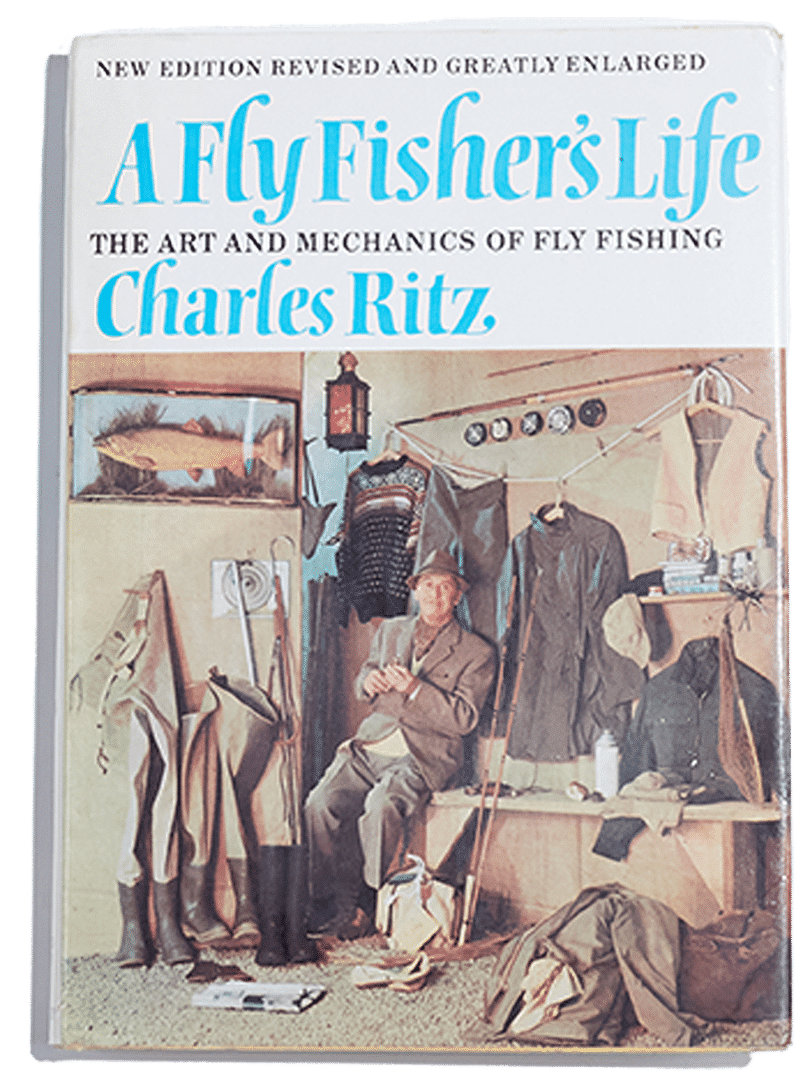
The third American edition of Charles Ritz's "A Fly Fisher's Life" is greatly expanded and revised, compared to the first translation of "Caught on the Fly."



